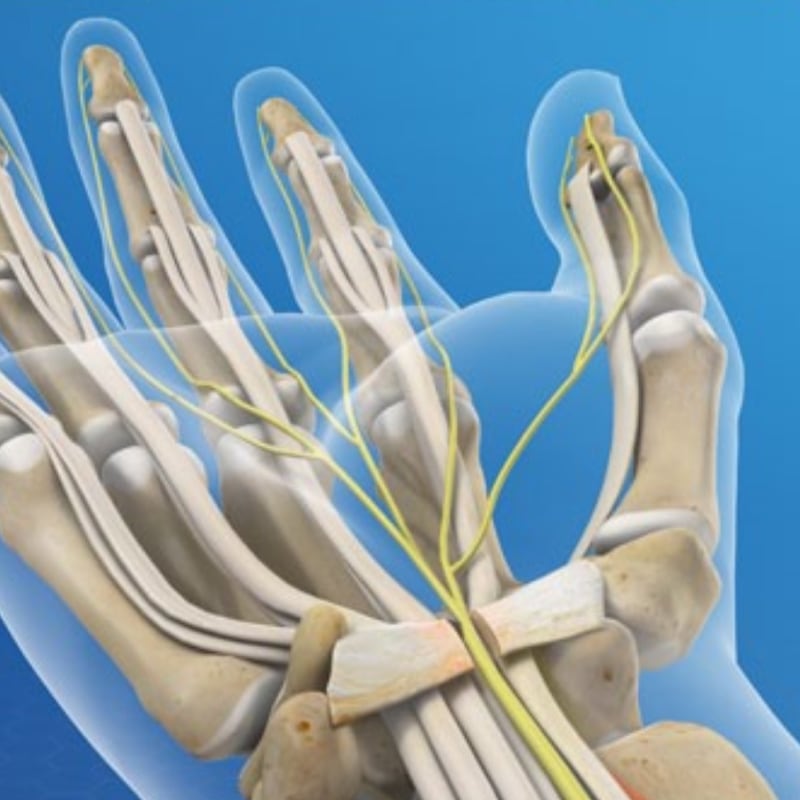

When symptoms of pain and weakness do not improve after a long period of conservative treatment.An endoscopic carpal tunnel release surgery is advised: You may be referred to therapy to be taught strengthening and stretching exercises. Medication and steroid injections may be used to treat pain and swelling. You may be advised to avoid activities that tend to bring on the symptoms. Ice packs may be recommended to keep down any swelling. Your hand and wrist may be immobilized with a splint or wrist brace for 4 to 6 weeks. Conservative treatment options may include treating any underlying medical conditions, such as diabetes and arthritis. How is Carpal Tunnel Syndrome Treated?Ĭarpal tunnel can be treated with conservative measures or surgical intervention. Further tests may be ordered including an X-ray to view your wrist bones, blood tests to rule out underlying medical conditions such as diabetes, arthritis, and thyroid problems, and electrodiagnostic testing to assess the speed and degree of electrical activity in your nerves and muscles. Your doctor diagnoses carpal tunnel syndrome by performing a detailed medical history and physical examination. Medical Conditions: Conditions such as hypothyroidism, rheumatoid arthritis, diabetes, obesity, gout, overactive pituitary gland, or the presence of a cyst or tumor extending to the carpal tunnel.Hormonal Changes: Pregnancy, menopause, birth control pills or hormone pills are risk factors as they alter the levels of certain hormones in the body.

Trauma: Injury to the wrist such as fractures or sprains.Congenital: Some people are born with narrow carpal tunnel canals.Repetitive Motion: performing heavy, repetitive hand and wrist movements with prolonged gripping at work or play.The following factors have been known to increase a person’s risk of developing carpal tunnel syndrome: Decreased sensation and weakness in the hand with diminished grip strength.Pain and burning in the hand and wrist that may radiate up the arm to the elbow.Numbness and tingling in the thumb, index, and middle fingers.Some of the common symptoms associated with Carpal Tunnel Syndrome include the following: The transverse carpal ligament can also become tight causing narrowing of the carpal tunnel space and pressure on the median nerve. Carpal Tunnel Syndrome occurs when the synovium swells, narrowing the limited space within the tunnel, and pinches the median nerve over time. Special tissues known as synovium surround and lubricate the flexor tendons in your wrist, allowing smooth movement of the fingers. The carpal tunnel houses the flexor tendons, that allow you to bend your fingers, and the median nerve, which provides sensation to most of your fingers and hand. Small wrist bones known as carpals form the bottom and sides of the carpal tunnel and a strong band of connecting tissue, known as the transverse carpal ligament, covers the top of the carpal tunnel. The risk and complication rates for this endoscopic surgical procedure are very low with less than 1% of patients experiencing complications.The carpal tunnel is a narrow passageway on the palm side of your wrist. In rare cases, the pain and numbness can return or the patient can have temporary loss of hand and grip strength. It can take several months for the body to fill the gap that is created when the carpal ligament is cut. Dominant Hand - Recovery takes a bit longer and up to 4 weeks when the patient uses their hands at workĪlthough the surgery releases the pressure and relieves CTS symptoms, all pain and numbness may not go away immediately.Non-Dominant Hand - Most people return to normal activities and work in 1 to 2 days.Recovery depends on how the patient uses his hands and on which hand was treated: Patients are encouraged to resume normal activities almost immediately. Only local anesthesia is required for the procedure. The surgeon then cuts the transverse carpal ligament and releases the pressure on the median nerve, eliminating the cause of CTS. The endoscope is guided through the incision.

Only one incision, less than a half inch wide, is made in the wrist. The endoscope enables the doctor to view the structures in the wrist that cause the condition – the transverse carpal ligament and the median nerve – without the need to open the entire area. Ten-Minute Outpatient Procedure for Carpal Tunnel Syndromeĭuring the procedure, Cooper’s specially trained surgeon uses an endoscope, a minimally-invasive medical device that is both camera and cutting blade.


 0 kommentar(er)
0 kommentar(er)
